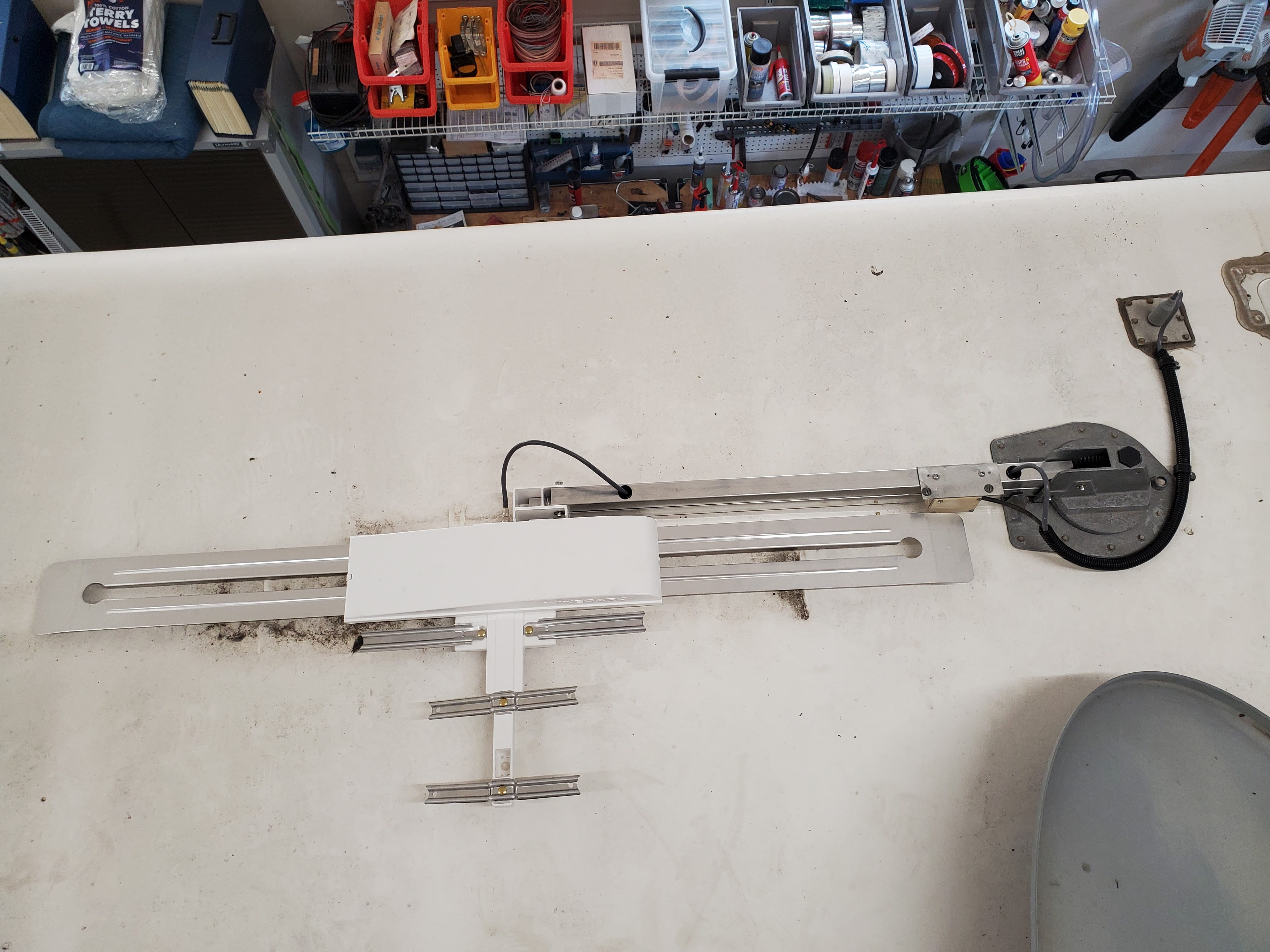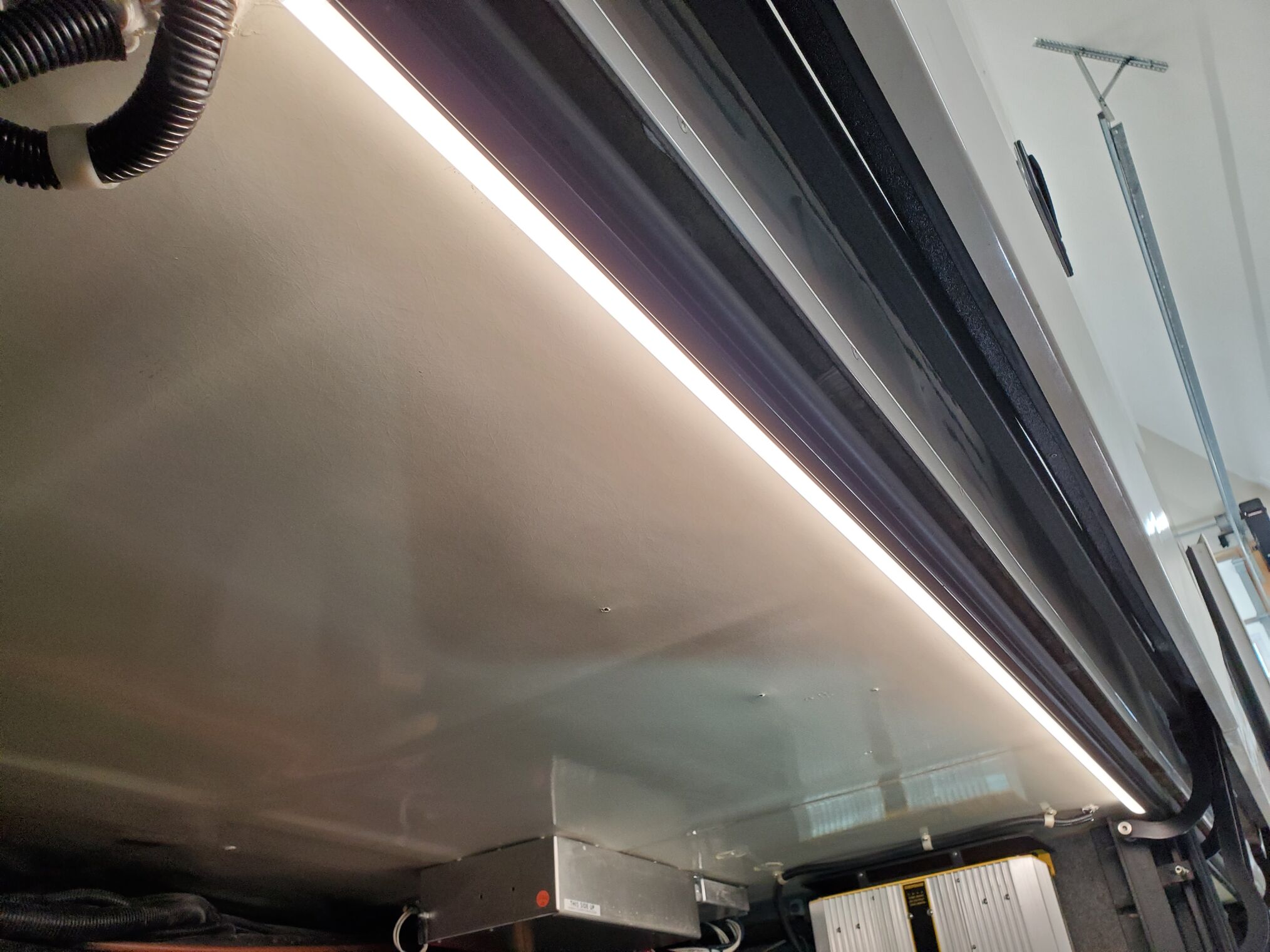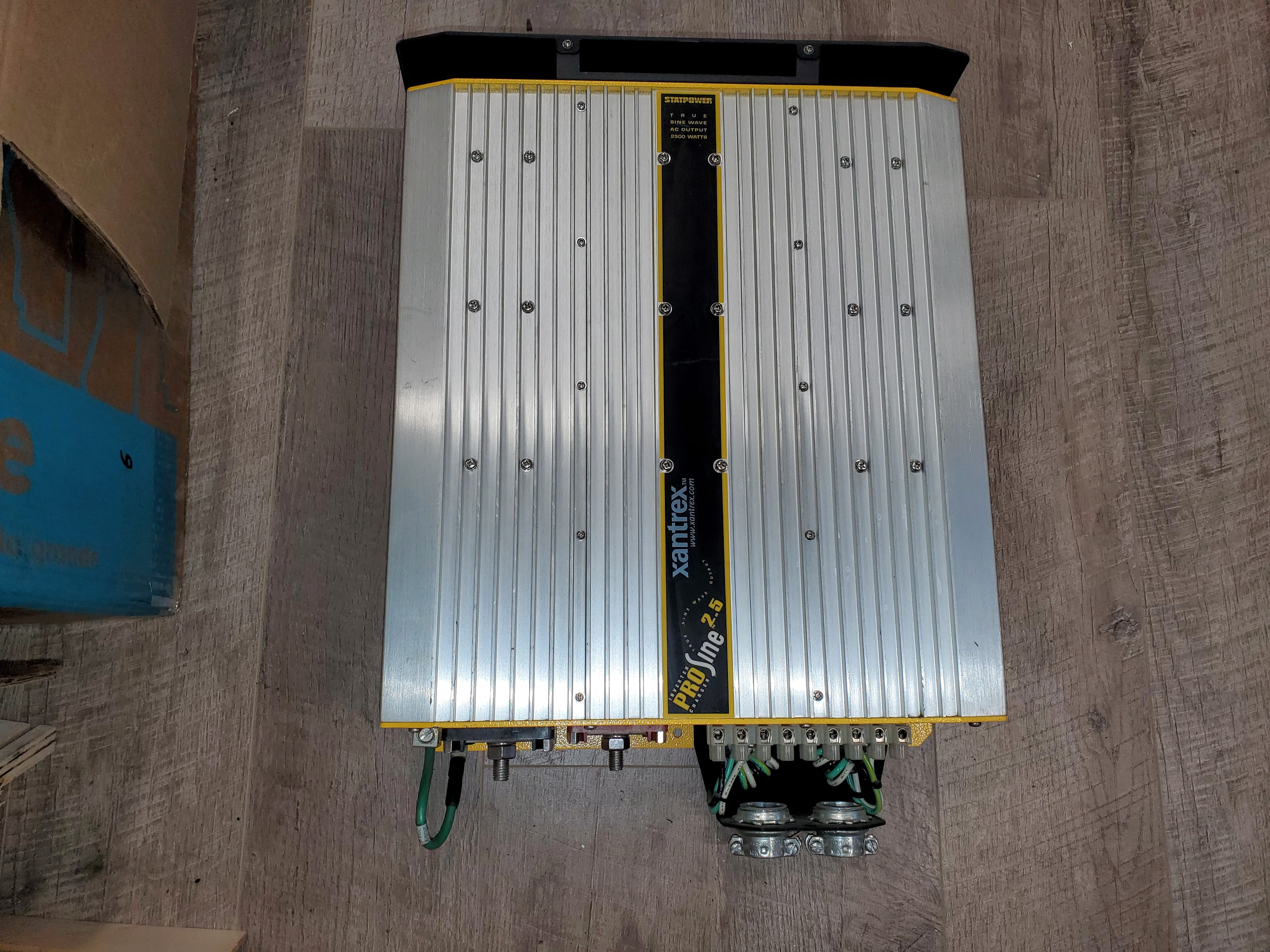Replacing the Sensar Antenna

Our coach came equipped with the original crank-up powered Sensar antenna. Although functional, it showed its age with peeling paint, bent wings in several areas, and worn coax cables and boots that needed replacement.
We explored various omnidirectional antenna options, but none could match the range of the Sensar. According to Winegard’s website and numerous reviews, the Sensar offers the best range. While omnidirectional models are convenient—eliminating the need for manual positioning and often featuring built-in Wi-Fi and 4G antennas—we ultimately chose the Winegard RVW-395 Sensar IV as an “upgrade.” Its improved UHF reception caters to the majority of broadcast signals, and its compatibility with our existing setup allowed us to avoid modifications / patching to the crank-and-turn mechanism on the interior ceiling.

Though individual Sensar components can be purchased for upgrades or repairs, it was more cost-effective to order a complete unit. We replaced the antenna head, elevation tubes, hinge pins, RG6 cable, and boots, while retaining other original components like the worm gear, elevation gear, gear housing, and baseplate, which were in excellent condition. This approach saved us the hassle of removing the baseplate, cleaning off old sealant, and resealing the roof.

During the removal of the old antenna head and elevation tubes, we discovered that the end of the tube was severely cracked. It wouldn’t have lasted much longer, so upgrading was the right call!
One item transferred from the old antenna to the new one was the “antenna-up” sensor. Added by Foretravel, this sensor illuminates a dash warning light if the ignition is on and the antenna is raised. The sensor was mounted to the aluminum elevation tubes using stainless steel self-drilling screws.
However, removing these screws required drilling them out due to galvanic corrosion—a reaction that occurs when aluminum and stainless steel are combined in an assembly. The aluminum transfers electrons to the stainless steel, causing the screws to seize in place.




